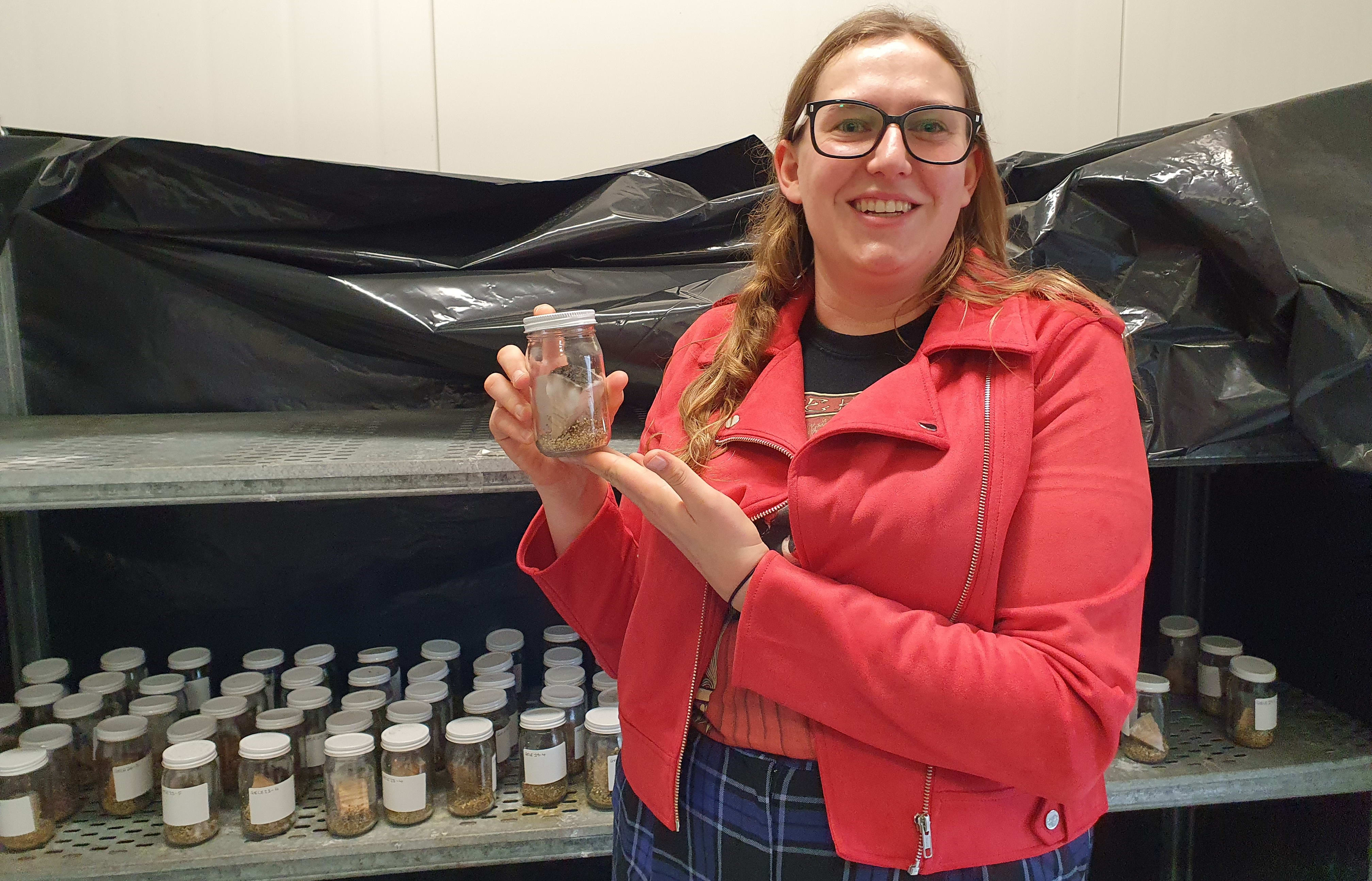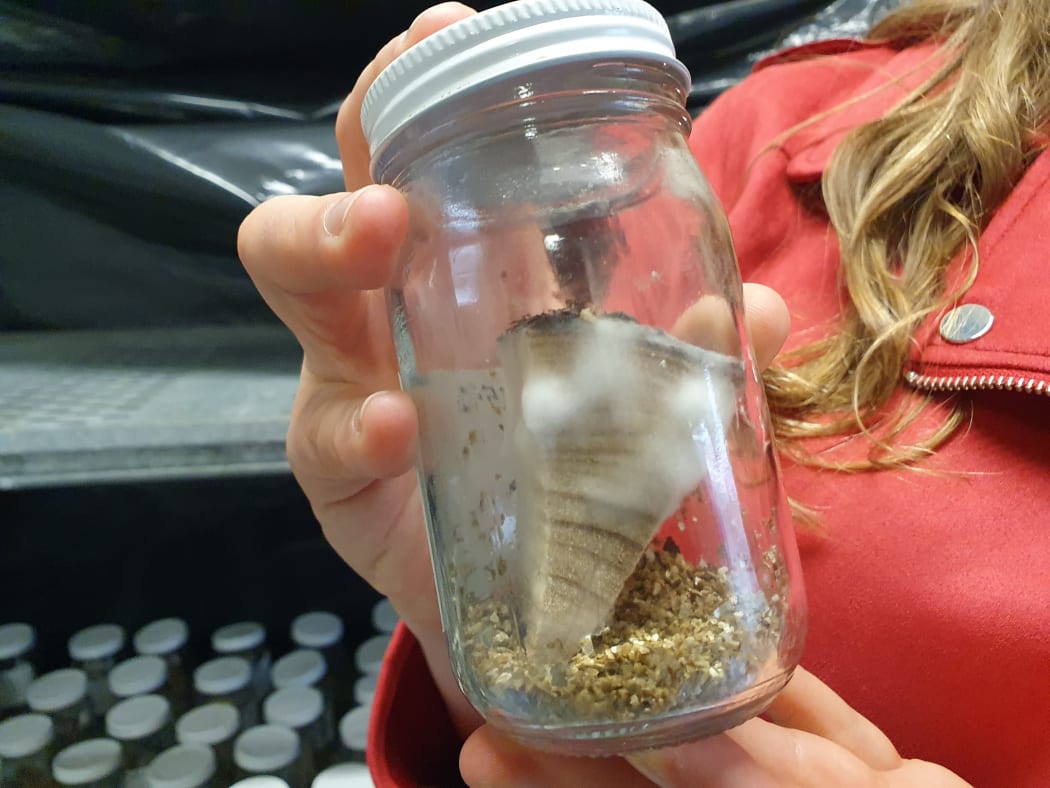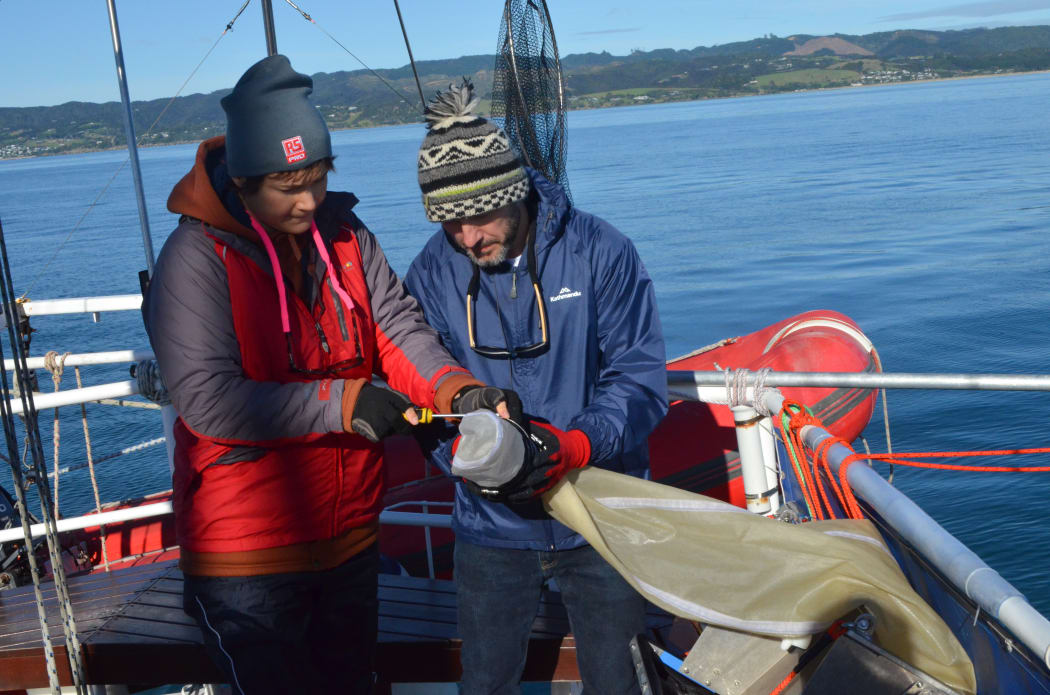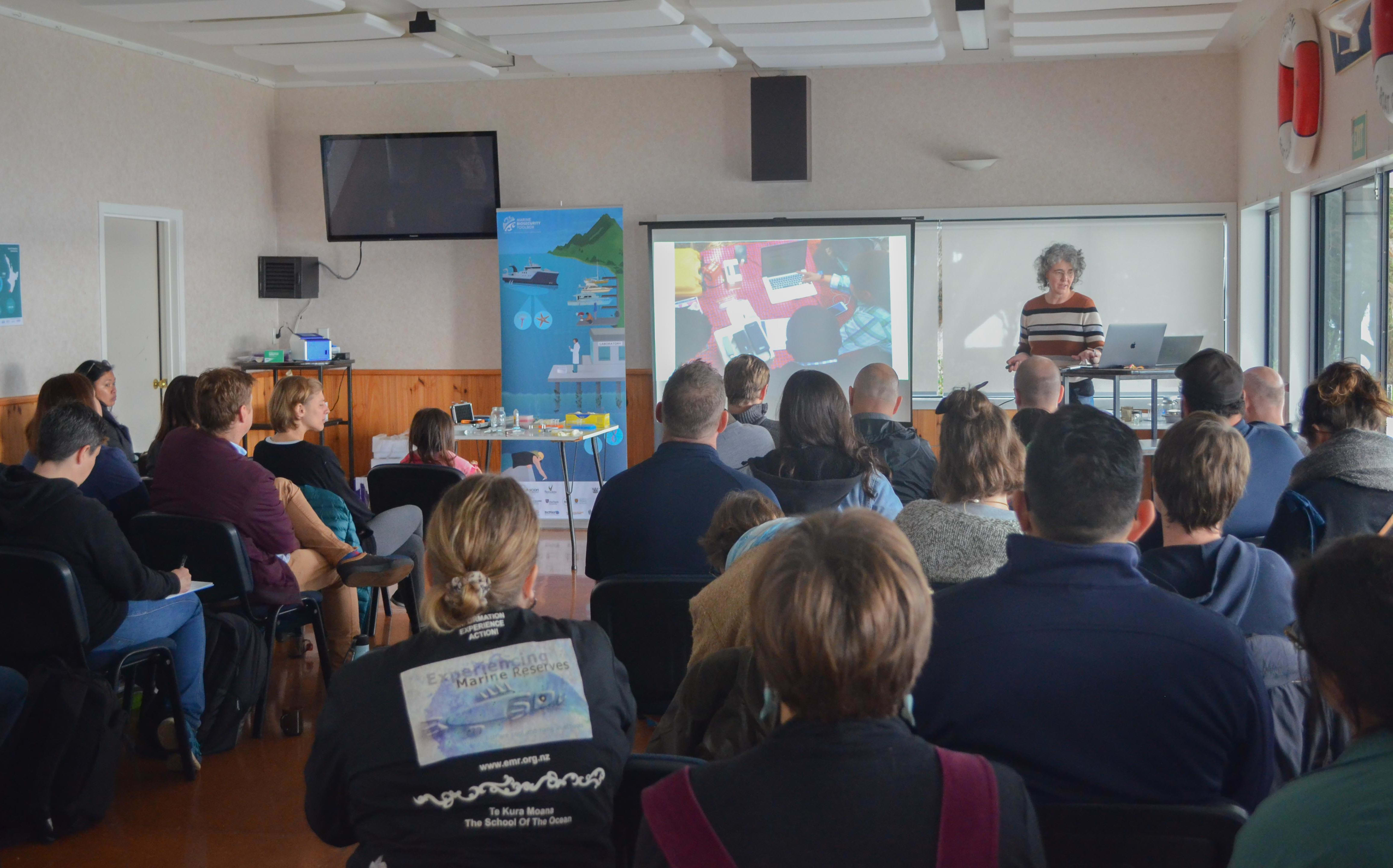Invasive species in Aotearoa are the unwelcome guests who have taken over, made a mess, and just won't leave. Plants that smother ecosystems, seaweeds that take over ocean floor habitats, insects, fungi and bacteria that harm native species. Not only that, but others are constantly knocking on the door. This week, stories on keeping them out, and keeping them in check.

Genevieve Early with the Armillaria fungus samples grown for her research Photo: Katy Gosset/RNZ
Follow Our Changing World on Apple Podcasts, Spotify, Stitcher, iHeartRADIO, Google Podcasts, RadioPublic or wherever you listen to your podcasts.
Pine-fighting fungus
New research has shown a native fungus could help slow the spread of invasive wilding pines.
Conservationists estimate that these weeds now cover 1.8 million hectares of land across New Zealand and the Ministry of Primary Industries forecasts that as much as 20 percent of New Zealand could be covered by unwanted conifers in as little as 20 years. The cost? Around $100 million annually in lost productivity, irrigation, hydro-electric power and fire control. And if the wilding pines continue to spread the cost to our economy could reach into the billions.
Katy Gosset meets a Canterbury Masters student who hopes to halt the pines' progress by innoculating the felled trees with armillaria fungus.

Armillaria fungus grown on pine for Genevieve Early's research Photo: Katy Gosset/RNZ
Keeping an eye on the oceans
Unwelcome visitors from the ocean include both invasive species and plastic pollution; keeping both at bay is a massive job.
Two national collaborative research programmes are trying to tackle these issues - the AIM2 (Aotearoa Impacts and Mitigation of Microplastics) project and the Marine Biosecurity Toolbox programme. Both involve large teams of scientists from multiple organisations.

Dr. Anastasjia Zaiko & Dr. Xavier Pochon Photo: Supplied
In 2021 these research programmes came together on two expeditions coordinated by the Blue Cradle Foundation to gather biosecurity and microplastics data, first in the Hauraki Gulf and then in Fiordland.
Collaboration and data sharing between the two teams is key, as plastic rafts could act as vehicles for invasive species to arrive in the waters around Aotearoa. Scientists across the two projects are working to identify what different organisms tend to interact with different kinds of plastic so that they can make predictions about what threats the marine environment might face.
Listen to how the researchers sample for plastics, and use environmental DNA methods to survey for biosecurity threats in the Hauraki Gulf.

Dr. Jo Stanton leads a workshop on environmental DNA techniques Photo: Supplied
Audio used in this piece was recorded onboard the Far Out Ocean Research Collective vessel Manawanui by Peter Wells of the Blue Cradle Foundation. For more details about the expeditions and projects on board visit the 2021 microplastics and marine biosecurity expeditions, Marine Biosecurity Toolbox, AIM2 and Algalita South Pacific webpages.


